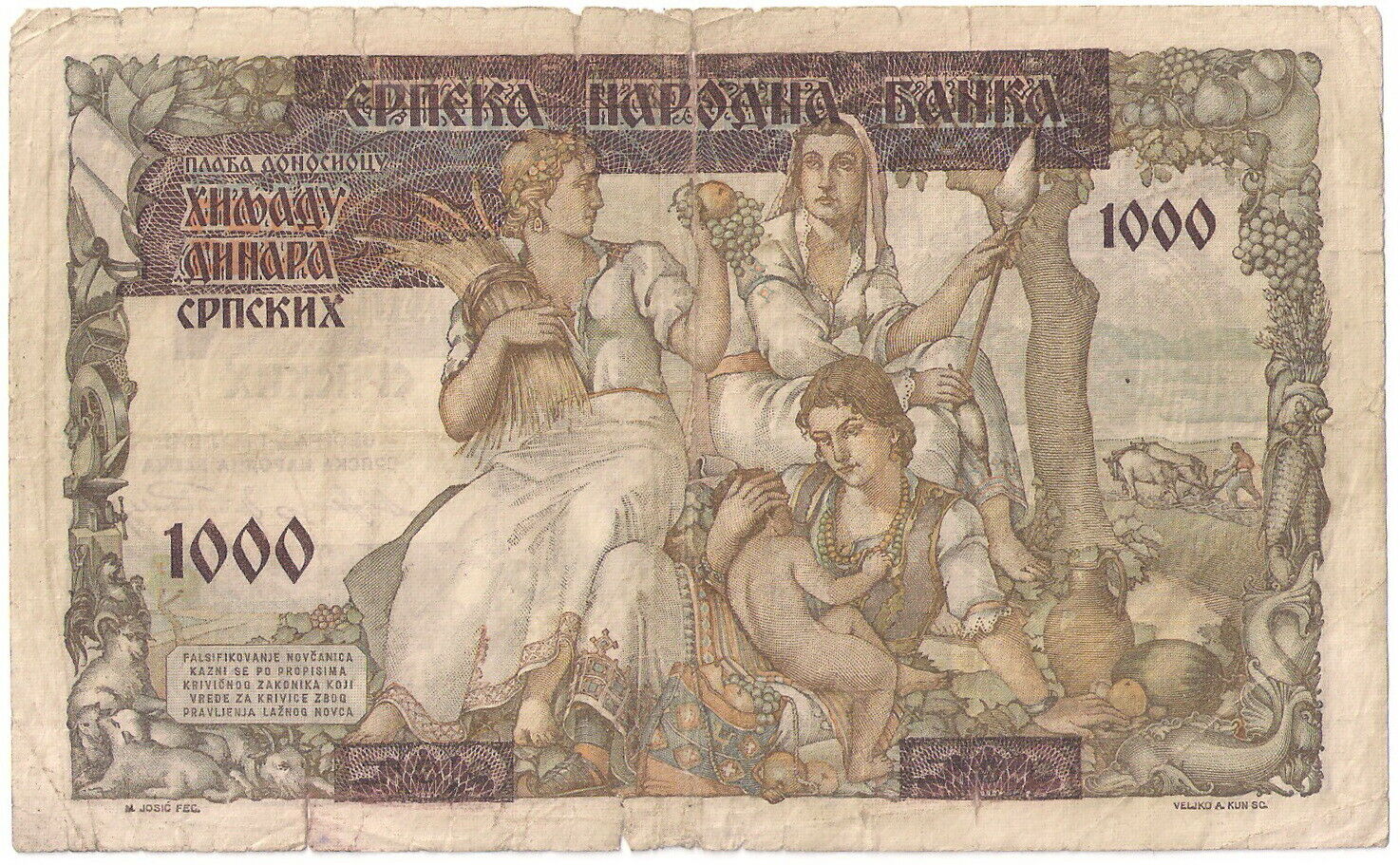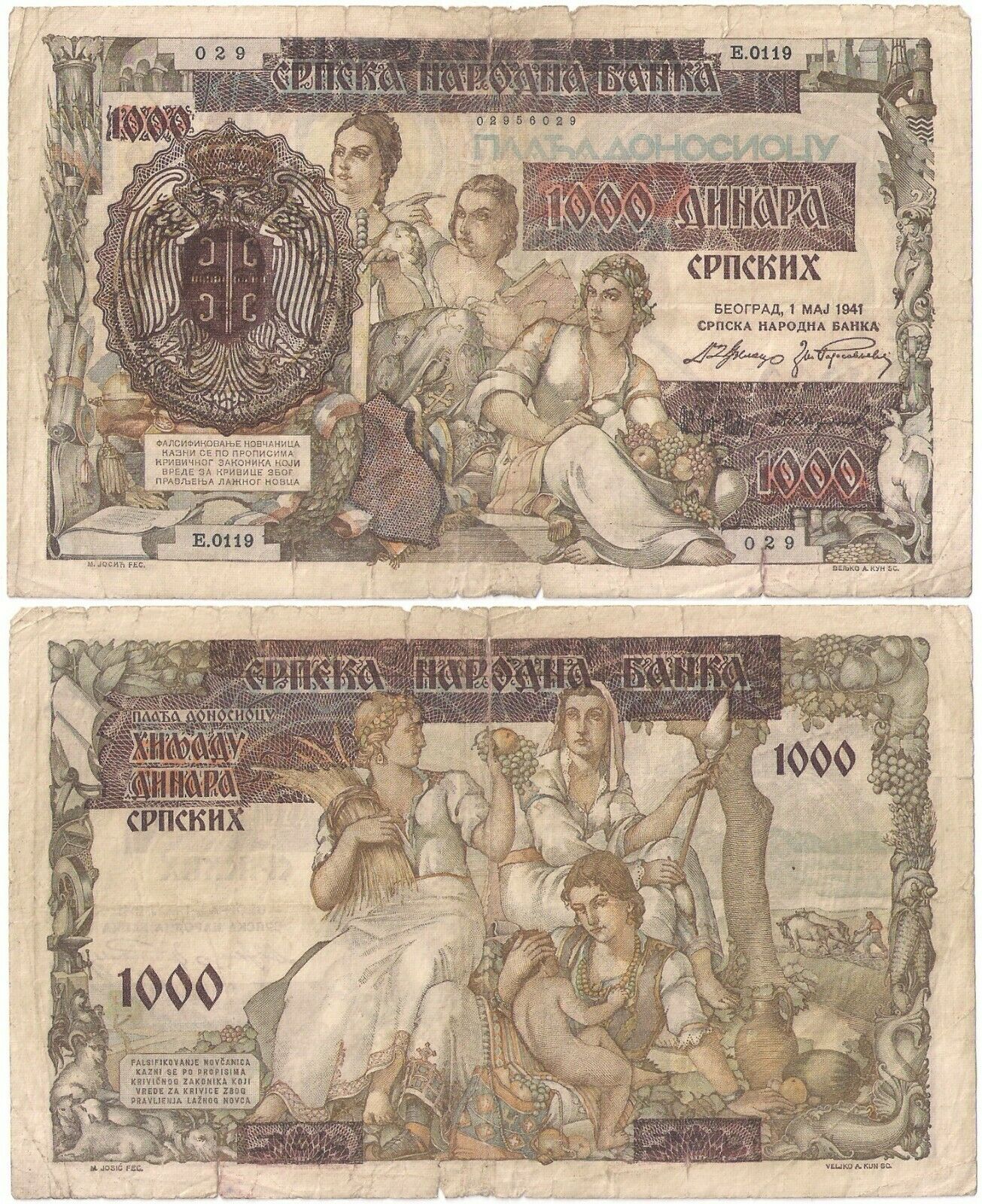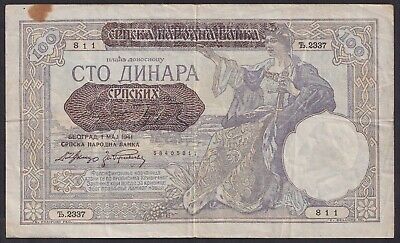-40%
Serbia banknote - 1000 dinara - year 1941 - World War II -Nazi German occupation
€ 7.39
- Description
- Size Guide
Description
The dinar is the currency of Serbia. The earliest use of the dinar dates back to 1214.In 1876, state notes were introduced in denominations of 1, 5, 10, 50 and 100 dinars. These were followed by notes of the Chartered National Bank from 1884, with notes for 10 dinars backed by silver and gold notes for 50 and 100 dinars. Gold notes for 20 dinars and silver notes for 100 dinars were introduced in 1905. During World War I, silver notes for 50 and 5 dinars were introduced in 1914 and 1916, respectively. In 1915, stamps were authorized for circulation as currency in denominations of 5, 10, 15, 20, 25, 30 and 50 paras.
In 1941, the Yugoslav dinar was replaced, at par, by a second Serbian dinar for use in the German occupied Serbia. The dinar was pegged to the German reichsmark at a rate of 250 dinars = 1 Reichsmark. This dinar circulated until 1944, when the Yugoslav dinar was reintroduced by the Yugoslav Partisans, replacing the Serbian dinar at a rate of 1 Yugoslav dinar = 20 Serbian dinars.
In May 1941, the Serbian National Bank introduced notes for 10, 20, 50, 100, 500 and 1000 dinars. The 100 and 1000 dinar notes were overprints, whilst the 10 dinar design was taken from an earlier Yugoslav note. Other notes were introduced in 1942 and 1943 without any new denominations being introduced.






